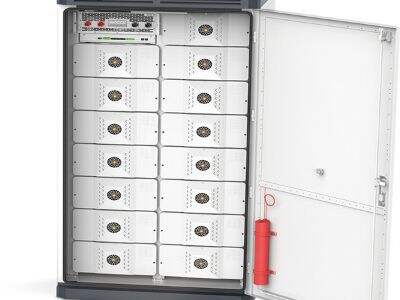Harnessing Renewable Energies with ESS Technology
Solar, wind power, and other renewable energy sources are needed because they do not create pollutants as part of the production process (which fossil fuels typically do). However, there are also days when the sun does not shine or the wind is not blowing so it is difficult to rely on these sources independently all the time. This is where Hoston ess energy storage technology stands to benefit.
Energy Storage Systems (ESS)
These systems are able to save extra power produced by renewable sources so that they can use it when there is no sun or wind available. Here, we can still use clean energy regardless of what the weather is doing. Isn’t that cool?
A more stable grid, by balancing supply and demand.
Imagine you have a plate of cookies, and would like to share them with some friends. And there is the logic, You want to ensure everyone receives a fair share so that no one ends up. This is kind of like the power grid with electricity.
The other is that it reelectrifies the ESS, and then stabilizes the excess supply of electricity so it can be securely transmitted on the grid. If there is an oversupply of electricity, it will be stored in ess energy storage system. And when power runs short, it can provide the stored energy to make up the shortfall. This helps to keep the grid stable and makes sure everyone gets to use power, when they want it.
Stored energy — less downtime, more reliability
Have you ever had a toy die in the middle of playing with it? It can be frustrating, right? As batteries can help to keep your toys working cool, in the very same way that energy storage systems can be used, when installed at larger scales for grid support or grid maintenance/support.
When electricity supply is disrupted, ESS technology can ensure power needs across the grid are met by supporting immediate parallel operation with high discharge rates. This ess solar systems prevents blackouts and keeps the lights on, even in unscheduled situations such as storms or equipment failure. Energy storage is more reliable grid = your favorite toy that never runs out of batteries.
VARs integrated with ESS for better grid flexibility.
Imagine you have a puzzle where pieces can slide around, and only fit into each other in one or two special ways. And that is what grid flexibility is all about changing to provide the right kind of service for people when and where they use electricity.
ESS capabilities can enable power grids to be more flexible. This allows us to effectively change from the power source as and when needed, be it solar, wind or just regular power plants when its required. That flexibility allows us to use energy much more effectively, and make sure that the grid is up to meeting evolving future requirements.
Enabling A Smarter, More Efficient Power System
Similar to learning new things, getting smarter day by day, like power grid turning smarter and more efficient using ESS technology.
ESS systems can then help to gather data that notes how electricity use is occurring on the grid. This data can then be implemented in making energy-saving or resource-efficient decisions. For all we know, enabling the grid to be smart may lead to a sustainable, efficient and inexpensive power system for all of us.
ESS technology is part of the group of technologies that contribute to allowing power systems to be more flexible and efficient, meaning reducing downtime, integrating energy storage as well as a smarter grid, being able to balance supply/demand and harnessing clean energy sources. ESS technology helps us take a step towards bringing a brighter and actually sustainable future to offspring. Well then, here's to ESS technology and its role in making the world a better place.






